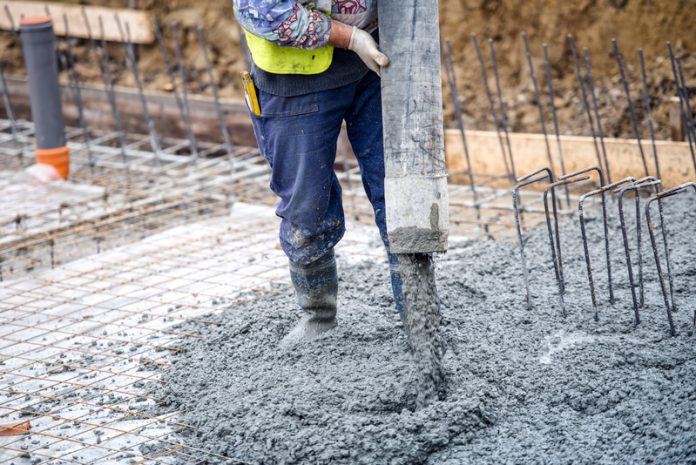Prof. Dr. Bernhard Elsener, Head Durability Research Group at The Institute for Building Materials ETH Zurich outlines the durability screening of new blended cements…
Portland cement has for decades been the most used type of cement to build reinforced concrete infrastructure. Experience and research on the corrosion of reinforcement in concrete made from Portland cement, have shown that the very high alkalinity of the pore solution ideally protects the steel [1]. The disadvantage is that about 8% of the man-made CO2 is due to the production of Portland cement (CEM I).
In order to reduce this CO2 emission and to obtain materials that have a reduced environmental footprint, the cement industry have already made great efforts, e.g. in changing from fuel to waste incineration. However, to obtain a substantial CO2 reduction, the clinker content in the cements must be reduced and substituted with supplementary cementitious materials (SCM), such as limestone, fly-ash, and geopolymers etc. This substitution is ongoing and reflected in the decreasing amount of Portland cement and the increase of blended cements used for concrete construction. In the future blended cements with increasingly lower clinker content and a huge variety of supplementary cementitious materials (SCM) will be used.
However, achieving sustainability not only requires decreasing the environmental footprint of the materials at the time of their production, (reducing the clinker content) but to also combine this with high durability, thus achieving long and maintenance free service lives of the structures in their actual exposure environments. The introduction of non-Portlandite binders has strongly increased the diversity of the pore solution chemistry in concrete: the hydroxide (OH-) concentration in the pore solution of systems with SCMs is typically about a factor of 10 lower than in Portland cement systems; additionally, also the pH buffer capacity is generally depressed as a result of the reduction, (or elimination) of the calcium hydroxide reserve considered one of the main reasons for the corrosion inhibiting nature of Portland cement systems. Whereas it is clear that the different pore solution chemistry of concrete made with blended cements will affect the corrosion protection of the reinforcing steel, precise information on how this will influence the service life of structures (Figure 1), are not yet available.
For a sustainable use of the different blended cements, convincing answers for the long-term durability of these new structures, both regarding the resistance against carbonation and against chloride-induced corrosion, are urgently needed. As no long-term experience is available, the input parameters for service life calculations have to be determined in laboratory experiments. Such performance tests include transport properties, permeability of oxygen, carbonation process and the corrosion rate of steel in carbonated concrete. Today, these tests based on large samples are very time consuming and give only limited results. Therefore, a new test setup for durability screening of new blended cements has been developed at our institute (Figure 2) [2]. It consists of small (8 x 10 cm) and thin (6 mm) cement paste or mortar samples instrumented with a reference electrode, 4 steel wire electrodes and a stainless steel grid counter electrode. The thin sample allows rapid full carbonation (max 3 weeks in 4% CO2) and rapid equilibration of environmental humidity. Parameters that can be measured are electrical resistivity of the sample (w/c ratio, humidity, and pore solution), corrosion potential and corrosion rate of the steel (durability, initiation and propagation of corrosion), oxygen diffusion and oxygen consumption rate. The sample can in principle be instrumented with additional sensors such as chloride or pH sensors.
The new setup for durability screening of new blended cements can be used for any cement blend, w/c ratio and admixture content. Durability testing can be performed both for chloride or carbonation induced corrosion. Specific applications that are envisaged are:
- Durability screening of completely new, unknown blended cements in standard conditions (w/c ratio, environment);
- Durability testing of already established blended cements in a variety of environmental conditions of testing of specific mixes for specific special environments (e.g. marine structures);
- Research on the mechanisms and controlling factors of corrosion in carbonated concrete.
The potential users are cement producers, test laboratories, research institutions, standardisation bodies, owners that build a large numbers of new structures etc. The potential market worldwide is huge, especially because cement producers and users are still local and many different new blends have to be tested.
The setup for rapid durability screening of new blended cements presented contributes decisively to testing, standardisation and increased future use of new blended cements. It contributes to tackle the future challenge of cement and building industry, to guarantee long-term durability of reinforced concrete infrastructure with the minimum amount of clinker in the cement, thus minimum CO2 emission possible.
[1] L. Bertolini, B. Elsener, E. Redaelli, P. Pedeferri, R. Polder, Corrosion of Steel in Concrete, WILEY VCH 2013 (second edition)
[2] M. Stefanoni, U. Angst, B. Elsener, Innovative sample design for corrosion rate measurement in carbonated concrete, presented at 11th annual International Concrete Sustainability Conference (2016 ICSC) May 15 – 18, 2016, Washington DC (USA)
Authors:
M. Stefanoni, U. Angst, B. Elsener
Prof. Dr. Bernhard Elsener
Head Durability Research Group
Institute for Building Materials ETH Zurich
elsener@ethz.ch
http://www.ifb.ethz.ch/corrosion
Please note: this is a commercial profile













